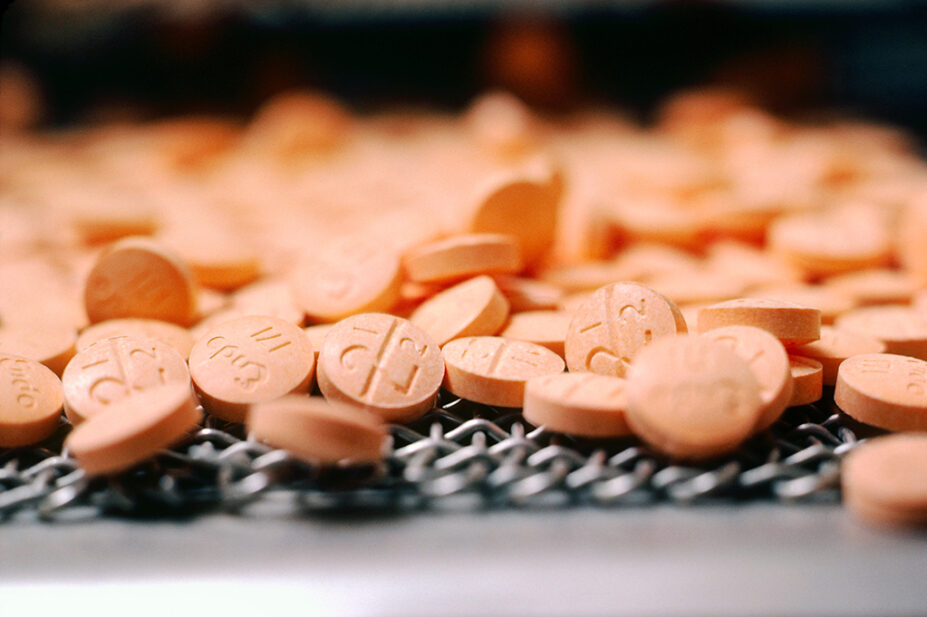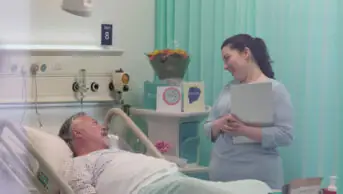
H. Mark Weidman Photography / Alamy Stock Photo
Transition of care from hospital to community settings is recognised as an area of high risk for medication-related safety incidents.
One study into medication incidents reported to the National Reporting and Learning System in England and Wales between 2015 and 2019 reported that warfarin and factor Xa inhibitors were common medications associated with incidents occurring after hospital discharge[1]. The potential benefits of the discharge medicines service (DMS) have been acknowledged and patients on anticoagulants are on NHS England’s suggested list of patients for referral[2]. In some health systems, patients on this class of medication have been a focus for DMS[3].
Following the report of the community pharmacy oral anticoagulant safety audit conducted as part of the 2021/2022 pharmacy quality scheme[4], we wanted to understand how community pharmacies in Cornwall were responding to DMS referrals for patients discharged on an anticoagulant.
We examined a download from PharmOutcomes for a recent period of six months and searched for patients who had an oral anticoagulant listed within their discharge medication. We examined the sections of PharmOutcomes that community pharmacists complete when undertaking their referral, looking for free text entries where a named anticoagulant appeared. These sections or stages relate to stage 1 of the DMS when a discharge referral is received by the pharmacy, and stage 2 when the first prescription is received by the pharmacy following discharge (this may not be a repeat prescription). We then grouped the text entered by the pharmacists into headings based on the entry prompts within the PharmOutcomes system that the pharmacists see.
Over six months to December 2022, there were 2,361 completed DMS referrals, with 525 (22%) of these patients (mean age 77 years, 50% male) given an anticoagulant as part of their discharge medication. For these 525 patients, PharmOutcomes contained free text mentioning one of the anticoagulants in the sections devoted to stages 1 or 2 of the DMS in 48 (9%) instances. The type of entries made are shown in the Table below, while the Box contains illustrative examples of the free text.
Our cohort of patients discharged from hospital is a much smaller, recent cohort than was audited in the pharmacy quality scheme and it is unsurprising that we found warfarin to be prescribed in only 8% of our 525 patients, compared with 20.8% in the audit. There has been a continuing move away from warfarin to direct oral anticoagulants over time. Apixaban use at 44% and rivaroxaban at 29% are similar to the audit proportions (41.4% and 25.2%, respectively).
The national audit comments on actions taken by community pharmacy in relation to concomitant prescribing of multiple oral anticoagulants, and we see as part of the DMS some examples of the pharmacist noting a risk around the patient potentially receiving different strengths of the same anticoagulant.
During our six-month period, a total of 812 DMS referrals where either rejected or not actioned by the pharmacy; an anticoagulant was part of the discharge medication in 181 (22%) of these referrals. DMS referrals may be rejected for various reasons, including when the patient has been re-admitted or is no longer using the pharmacy.
Although this description of what is recorded by pharmacists in PharmOutcomes cannot be directly related to the findings of the oral anticoagulant safety audit, we believe that there is further potential for community pharmacy to become more involved in the safe transition of care for patients discharged on this group of high-risk medicines.
Box: Illustrative free text entries from PharmOutcomes for six patients
Prescription intercepted
Rivaroxaban dose increased to 20mg
Rivaroxaban switched to apixaban 2.5mg BD
Apixaban reduced from 5mg BD to 2.5mg BD
DMS stage 1 issues identified
Edoxaban reduced to 30mg
Discharged with edoxaban 60mg but prescription for 30mg on the system
DMS stage 2 first prescription issues
Rivaroxaban dose only 15mg, discharge states 20mg
- 1Alqenae FA, Steinke D, Carson-Stevens A, et al. Analysis of the nature and contributory factors of medication safety incidents following hospital discharge using National Reporting and Learning System (NRLS) data from England and Wales: a multi-method study. Therapeutic Advances in Drug Safety. 2023;14:204209862311543. doi:10.1177/20420986231154365
- 2Missed opportunities: the patients falling through the cracks after discharge. Pharmaceutical Journal. 2022. doi:10.1211/pj.2022.1.160980
- 3The Discharge Medicines Service and counselling services for newly-anticoagulated patients. Wessex Academic Health Science Network and Hampshire Hospitals NHS Foundation Trust. 2022.https://wessexahsn.org.uk/img/projects/HHFT%20Anticoagulation%20Counselling%20project%20v2.pdf (accessed May 2023).
- 4Community pharmacy oral anticoagulant safety audit 2021/22. NHS England. 2023.https://www.england.nhs.uk/long-read/community-pharmacy-oral-anticoagulant-safety-audit-2021-22/ (accessed May 2023).


